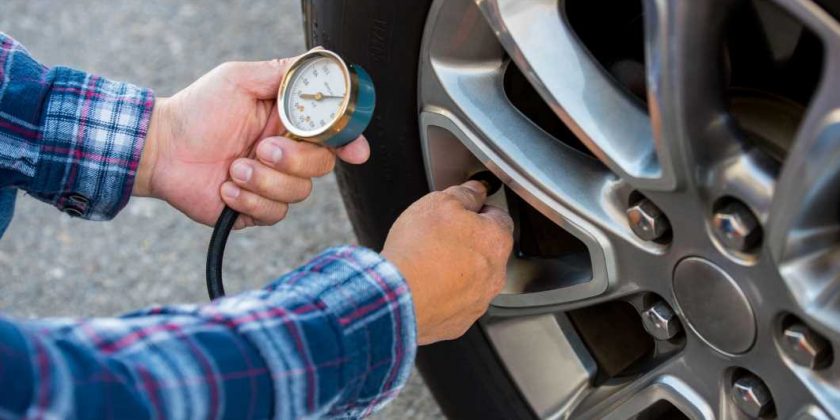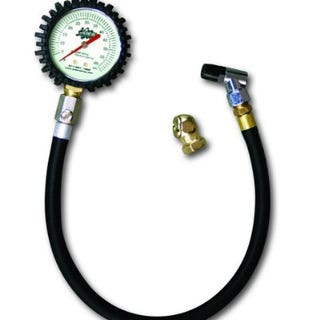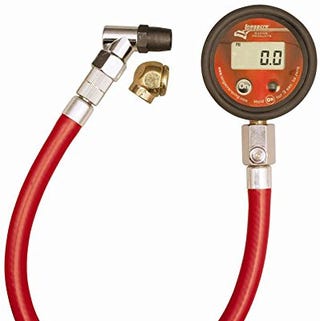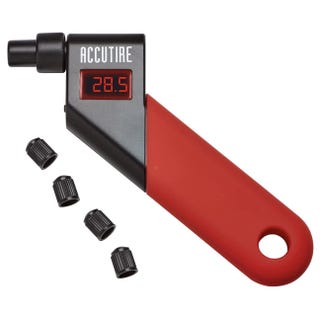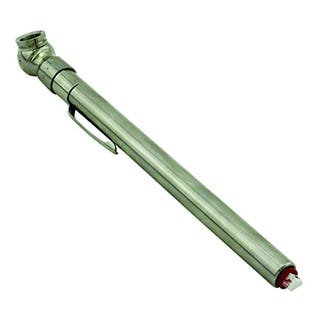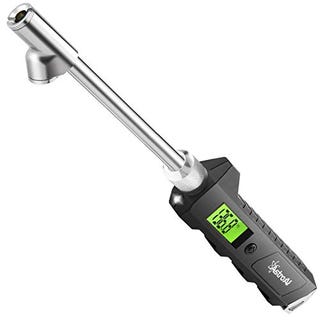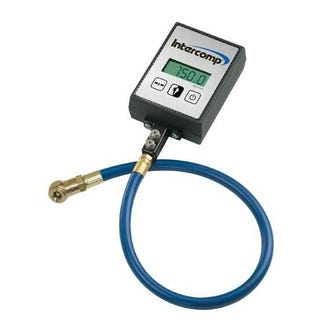For everything you need to know about buying and maintaining tires, click here.
Until flying cars arrive, which won’t be any time soon, tires will remain indispensable. They are precisely engineered to perform multiple, often conflicting, functions: They must grip the road securely, cut a safe path through puddles and snow, turn with precision, contribute to good fuel economy, help smooth the ride, and be strong enough to resist damage from potholes and road debris. In order to function properly, tires must be filled with a specific amount of pressurized air.
That’s why you should have a good tire gauge to monitor your tires’ air pressure. Why keep tabs on the air in your tires? The most important reason is to ensure your safety. Too much pressure can be problematic, but far more problematic and, unfortunately, more common is having too little tire pressure. A tire can lose a significant amount of air pressure before it starts to look low or flat, yet be dangerous nonetheless. A badly underinflated tire has a greater propensity to deform or curl under the wheel when turning—during emergency lane changes, for example—and less ability to protect both the tire and the wheel it’s on from damage or blowouts caused by deep or sharp-edged potholes. Maintaining proper pressure also improves wear, so you won’t need to replace well-maintained tires as often as neglected ones.
Why keep tabs on the air in your tires? To ensure your safety.
Tires can lose a small amount of pressure over time and are significantly affected by large swings in temperature, typically losing about a pound of pressure for every 10-degree drop in ambient temperature. So as the seasons change and the weather changes with them, your tire pressure needs to be adjusted as well.
It’s ultimately your responsibility to ensure that the tires on your vehicle are properly inflated. Sooner or later, you’ll need to add air. When that time comes, we believe you should have your own pressure gauge. The air pump at your neighborhood gas station might have a pressure indicator that pops out from the grip when connected to the valve stem of the tire, but it can be less than precise and hard to read, especially when covered by dirt and grime.
Having a good tire-pressure gauge in one hand and the air hose in the other means you can set the pressures precisely. Check your owner’s manual or the driver’s-side door jamb for the proper pressures at which your tires should be set in the cold. If you’ve driven several miles to the air hose, add 3 psi—pressure gauges are calibrated in pounds per square inch, or psi—to the recommended pressures. Tires warm up when you drive, and their internal pressures increase; adding the extra air pressure compensates for that.
Tire-pressure gauges vary in size, shape, and price. Here’s a selection to choose from.
We have experience with Joes digital pressure gauges, so we trust this analog unit to be highly accurate as well. Joes supplies teams in many racing series, and racers require precise tire pressures to get the best performance out of their racing machines. One of these will serve you well.
Like Joes, Longacre sells to racers, and some of its most precise digital pro gauges cost hundreds of dollars. Even this lower-cost digital gauge has some advantages over analog units: It’s easier to read and displays pressure in 0.2-psi increments, plus Longacre claims it’s accurate to 0.8 percent. That should be more than enough for just about anyone.
This is the gauge that we gauge good enough to use in the Car and Driver test garage. We set all of our test vehicles’ tire pressures precisely to ensure that they perform their best in our comprehensive testing program. This low-cost Accutire digital gauge works beautifully. It reads in half-pound increments, so you can set your tires’ pressures as accurately as we do.
This analog gauge is to modern digital gauges what a typewriter is to a laptop computer. While it’s ancient technology, it’s still far better than nothing, and it will help you to keep your tires in the correct inflation range—and do it for a rock-bottom price. But we recommend (and use) the Accutire gauge, so that should tell you where we stand.
It’s one thing to just read tire pressure—having the ability to add air is a helpful bonus. This top-rated inflator from Amazon reads pressures from 0 to 250 psi and has a claimed accuracy within 1 percent. The LED screen is powered by two included AAA batteries. To add air, you’ll just need an air compressor.
If you plan to measure tire pressures for heavy-duty vehicles, such as trucks and RVs, this is the gauge to buy. Equipped with a flashlight, a crisp LED display, and a dual head to check inner and outer valve stems, this gauge is a great product to stow in your glovebox. And with a readable range from 0 to 230 psi, it’ll work for just about anything.
The folks at Intercomp know how important tire pressure is, as they specialize in accurate gauges for industrial and performance applications. This one is the cream of the crop, with a quick digital gauge and a claimed accuracy within 0.1 percent. With a thumb-operated dual bleeder and a 22-inch hose, this tool will get your car back on the track safely and promptly.
From: Car and Driver
Source: Read Full Article
